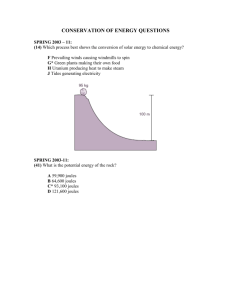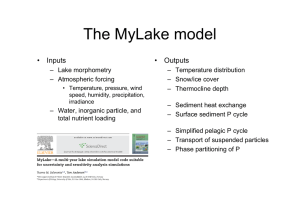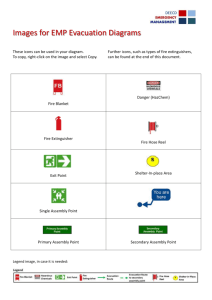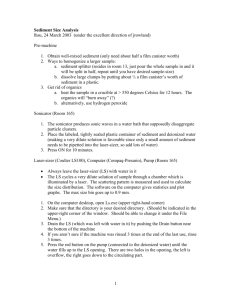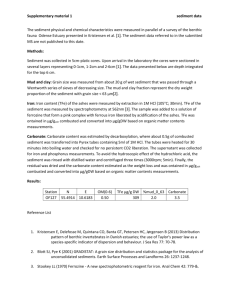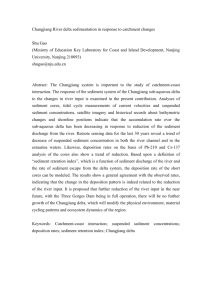Safe_practices
advertisement
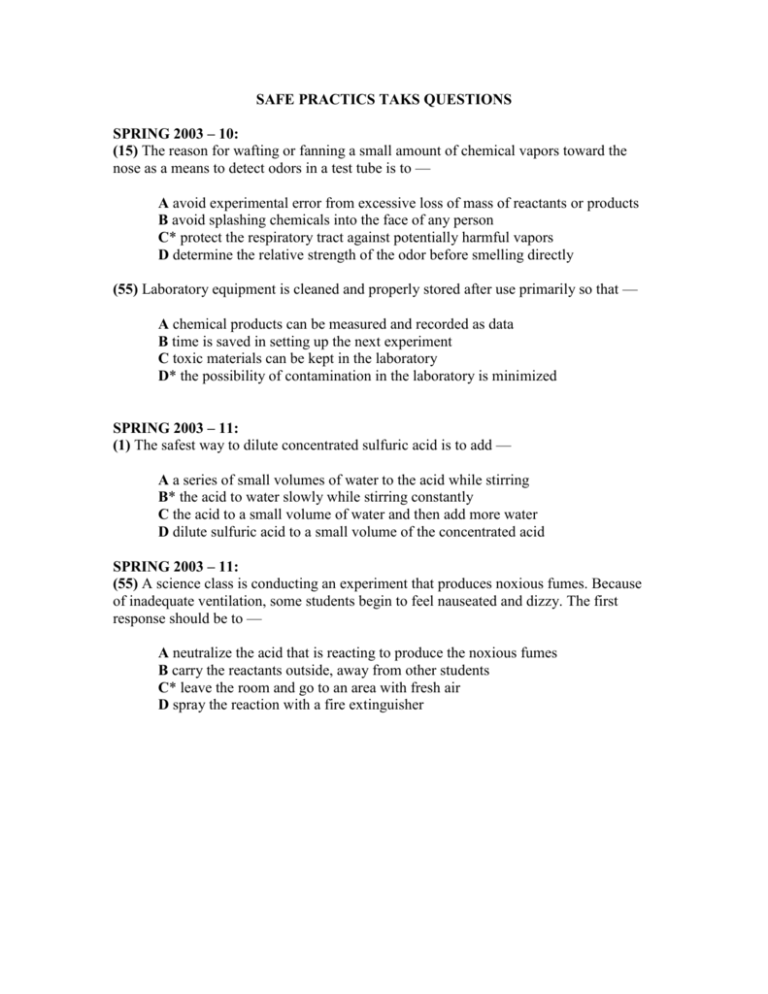
SAFE PRACTICS TAKS QUESTIONS SPRING 2003 – 10: (15) The reason for wafting or fanning a small amount of chemical vapors toward the nose as a means to detect odors in a test tube is to — A avoid experimental error from excessive loss of mass of reactants or products B avoid splashing chemicals into the face of any person C* protect the respiratory tract against potentially harmful vapors D determine the relative strength of the odor before smelling directly (55) Laboratory equipment is cleaned and properly stored after use primarily so that — A chemical products can be measured and recorded as data B time is saved in setting up the next experiment C toxic materials can be kept in the laboratory D* the possibility of contamination in the laboratory is minimized SPRING 2003 – 11: (1) The safest way to dilute concentrated sulfuric acid is to add — A a series of small volumes of water to the acid while stirring B* the acid to water slowly while stirring constantly C the acid to a small volume of water and then add more water D dilute sulfuric acid to a small volume of the concentrated acid SPRING 2003 – 11: (55) A science class is conducting an experiment that produces noxious fumes. Because of inadequate ventilation, some students begin to feel nauseated and dizzy. The first response should be to — A neutralize the acid that is reacting to produce the noxious fumes B carry the reactants outside, away from other students C* leave the room and go to an area with fresh air D spray the reaction with a fire extinguisher APRIL 2004 – 10: (2) The ingredients described above are used to make a bonding agent. The most important safety precaution to take when applying this bonding agent is to — F dry it with a small flame G* work in a well-ventilated area H cover the work area with newspaper J wear a lab coat APRIL 2004 – 10: Powerful Plankton The U.S. Naval Research Laboratory has created an experimental marine fuel cell that could produce enough electricity to power ocean-monitoring devices. This fuel cell runs on seawater and sediment, with the help of plankton. Some plankton on the surface of ocean sediments use dissolved oxygen to break down organic matter, releasing energy; this is an aerobic process. The plankton in the deeper sediments break down organic matter without using oxygen; this is an anaerobic process. These two processes create a difference in voltage between the surface of the sediment and the sediment farther down in the seabed. The voltage difference can be used to produce electricity—up to 5.0 10 – 2 watts of power. Energy supplied by this type of fuel cell can be obtained as long as there is organic matter in the sediment. (15) Which safety precaution should be observed while analyzing sediment from a marine aquarium? A* Wear rubber gloves B Use a fume hood C Avoid using glassware D Have a fire extinguisher nearby APRIL 2004 – 10: (35) A safety checklist for this activity should include the presence of a proper fire extinguisher and all the following items except a — A fire blanket B receptacle for broken glass C laboratory apron D* squeeze bottle APRIL 2004 – 11: (9) All of these procedures must be followed when using the setup shown above except — A putting on safety goggles B handling the beaker with tongs C securing loose clothing D* wearing rubber gloves JULY 2004 – 11: (15) Reactions that produce toxic gases should be performed in a — A* laboratory fume hood B beaker with a watch glass on top C well-ventilated area of the lab D warm, airtight drying oven JULY 2004 – 11: (24) Classification symbols for certain fire extinguishers are shown below. Which class of fire extinguisher should be used when a hot plate overheats and catches on fire? FALL 2005 – 11: 7 When performing this activity, students must remember to – A label the equipment used B* keep hands away from face and mouth C sterilize the dissecting needle before use D disinfect the fur and feathers removed from the pellet FALL 2005 – 11, FEBRUARY 2006 – 11 #52, JULY 2006 – 11 #18: 50 This picture indicates that the chemical represented is — F pressurized G *corrosive H flammable J toxic OCTOBER 2005 – 11: 5 The anatomy of grasshoppers is being studied in a dissection lab. Working in groups of three, students make observations using a hand lens, forceps, and a scalpel. Two of the students in a group have finished their observations. These two students may do all of the following except — A * remove their goggles B review their notes C wash their hands D assist their lab partner APRIL 2006 – 10: 46 In what part of this process should safety precautions be planned? FQ GR H* S JT APRIL 2006 – 11: 19 The label shown above contains information about some harmful effects of acetone. A group of students plans to use acetone to rinse out a glass container. A second group of students is working at the same lab table. Which of the following lab procedures should the second group of students avoid? A* Heating water with an open flame B Pouring hydrochloric acid into a beaker C Filtering precipitates from a liquid solution D Collecting oxygen from plants in a test tube

